Whole Numbers
Whole numbers are the set of numbers that includes all the natural numbers (1, 2, 3, 4, ...) and zero (0). They are used to represent quantities, counts, or to describe a position in a sequence. Whole numbers are important in various mathematical operations and form the foundation for more advanced mathematical concepts.Properties of Whole Numbers
1. Closure Property: The sum or product of two whole numbers is always a whole number. 2. Commutative Property: The order of addition or multiplication of whole numbers does not affect the result. 3. Associative Property: The grouping of whole numbers in addition or multiplication does not affect the result. 4. Identity Property: The sum of any whole number and zero is the whole number itself. 5. Distributive Property: Whole numbers can be distributed over addition and subtraction.Operations with Whole Numbers
1. Addition: Combining two or more whole numbers to find the total. 2. Subtraction: Finding the difference between two whole numbers. 3. Multiplication: Repeated addition of a whole number by another whole number. 4. Division: Sharing or grouping a whole number into equal parts.Study Guide
To understand whole numbers better, here are some key points to focus on:1. Understanding Place Value: Practice identifying the place value of digits in whole numbers. 2. Comparing Whole Numbers: Learn how to compare whole numbers using symbols like <, >, and =. 3. Adding and Subtracting Whole Numbers: Master the techniques for adding and subtracting whole numbers, including carrying and borrowing. 4. Multiplying and Dividing Whole Numbers: Practice the multiplication tables and understand the concept of division as repeated subtraction.Examples
Example 1: Add the whole numbers 456 and 789. Solution: 456 + 789 _______ 1245Example 2: Multiply the whole numbers 23 and 7. Solution: 23 x 7 = 161Example 3: Compare the whole numbers 532 and 620 using the symbols <, >.◂Math Worksheets and Study Guides Fourth Grade. Money
Study Guide Money
Money  Activity Lesson
Activity Lesson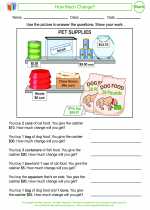 How Much Change?
How Much Change?  Activity Lesson
Activity Lesson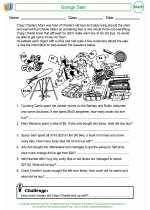 Garage Sale
Garage Sale  Activity Lesson
Activity Lesson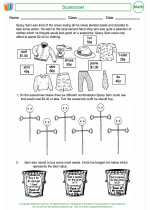 Scarecrow!
Scarecrow!  Worksheet/Answer key
Worksheet/Answer key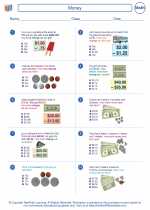 Money
Money  Worksheet/Answer key
Worksheet/Answer key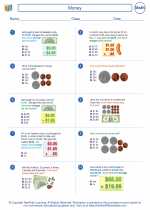 Money
Money  Worksheet/Answer key
Worksheet/Answer key Money
Money  Worksheet/Answer key
Worksheet/Answer key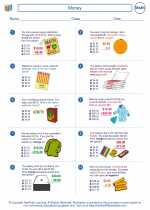 Money
Money  Worksheet/Answer key
Worksheet/Answer key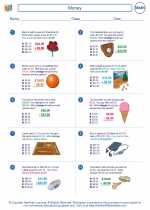 Money
Money  Worksheet/Answer key
Worksheet/Answer key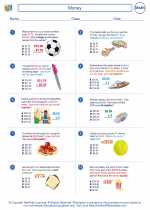 Money
Money  Worksheet/Answer key
Worksheet/Answer key Money
Money 

 Activity Lesson
Activity Lesson
 Activity Lesson
Activity Lesson
 Activity Lesson
Activity Lesson
 Worksheet/Answer key
Worksheet/Answer key
 Worksheet/Answer key
Worksheet/Answer key
 Worksheet/Answer key
Worksheet/Answer key
 Worksheet/Answer key
Worksheet/Answer key
 Worksheet/Answer key
Worksheet/Answer key
 Worksheet/Answer key
Worksheet/Answer key
 Worksheet/Answer key
Worksheet/Answer key

Create And Print more Money worksheets with Money Skills Worksheets generator
The resources above cover the following skills:
Algebra (NCTM)
Use mathematical models to represent and understand quantitative relationships.
Model problem situations with objects and use representations such as graphs, tables, and equations to draw conclusions.